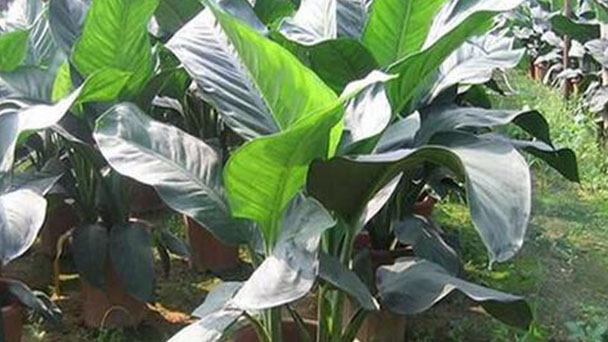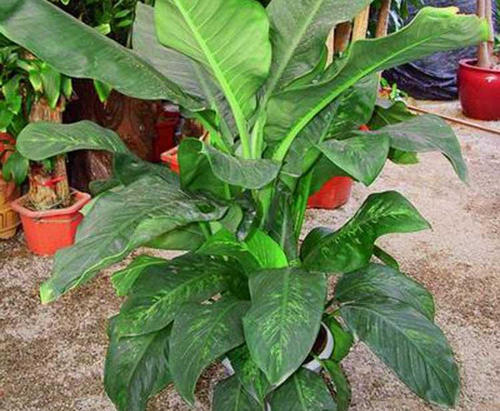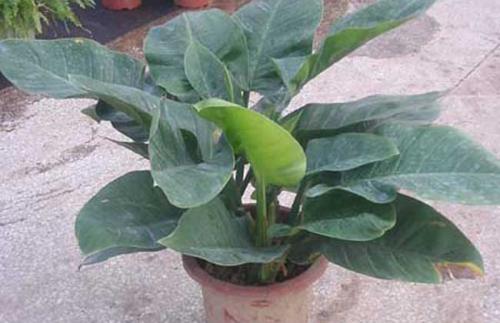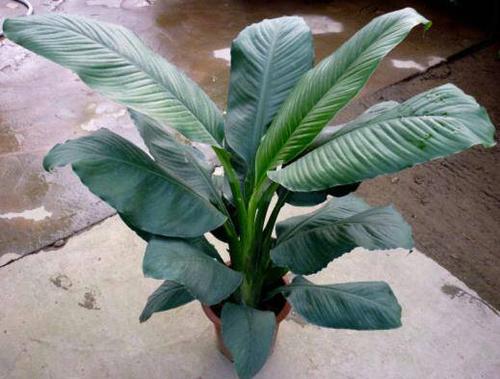Dumb cane (Dieffenbachia) profile
Written by Maggie
Oct 18 2021

Dumb Cane (Dieffenbachia) is a perennial herbaceous foliage plant of Araceae. Dumb Cane's wide leaves have attracted many people's attention. Its air purification ability is very strong, such as: formaldehyde, toluene, ammonia.
Dumb Cane soil is originally produced in the Canary Islands of America and Guinea of Africa, where fast growth and large and thick leaves are a new generation of indoor foliage plants. If dumb cane soil is kept slightly wet, it will have a relatively strong drought resistance.
Dumb Cane green leaves are elegant and beautiful, often placed in the study, the hall of the case or books, painting under the long, autumn and winter with red fruit to add more color.
Dumb cane picture
Dumb cane info
| Botanical Name | Dieffenbachia |
| Common Names | Dieffenbachia, dumb cane, mother-in-law's tongue |
| Plant Type | Herbaceous perennial (usually grown as a houseplant) |
| Sun | Part shade or bright indirect light |
| Hardiness Zones | 10–12 (USDA) |
| Flower color | White |
| Native Area | Caribbean, South America |
| Mature size | 3–10 feet tall, 2–3 feet in width |
Morphological features of dumb cane
Dumb Cane trunks stand upright and sometimes branched. Leaves clustered at apex of stem, long elliptic lanceolate, without petiole; Leaves are 40-90 cm long and 6-10 cm wide, arched, undulate, slightly obtuse; Dumb Cane is bright green, shiny.
Dumb Cane spikes, small, yellow-green, aromatic flowers.
Dumb Cane flowering, but not very beautiful, spikes, small, yellow-green, aromatic. General plants to achieve 2 meters or so, in autumn and winter proper conservation or place of origin can blossom.
The ecological habits of dumb cane
The suitable temperature for Dumb Cane growth is 20-30℃, the dormancy temperature is 13℃, and the wintering temperature is 5℃.
How to grow and care for dumb cane
Light
Dumb Cane is resistant to half shade, sun light is too strong, but the light is too dark, will also lead to leaf fading.
Water
Dumb Cane like water wet, 3-August growing season to water. In summer, water should be sprinkled frequently to increase the environmental humidity.
Temperature
Dumb Cane likes high temperature, not cold, suitable temperature for growth 20-30℃. The lowest overwintering temperature is above 12℃. Once affected by the cold leaves yellow wilting, terminal bud necrosis.
Fertilizer
During the growing period, nitrogen fertilizer was applied every month to promote its rapid growth. From spring to summer, fertilizer and water were applied once every two weeks. Reduce fertilization in the fall.
Soil
Dumb Cane requires loose, fertile, well drained soil.
Potting and Repotting
Repot annually for best results—simply lift the plant as a whole, knock away any old soil and dead material from the roots, and replace it in a larger container. Watch out for signs of stress on the plant, such as roots poking out from the surface, crowding, or falling leaves, which could signal that the plant needs repotting. After repotting dumb cane, give it some time to adjust to its new setting. Make sure to wear gloves to avoid contact with the sap.
Disease control of dumb cane
Leaf spot
This disease occurs in the Dumb Cane leaves, the humidity of the weather, this disease is prone to occur. At first, the disease spot is a small brown spot, and the surrounding water impregnation faded green, and a round ripple expansion, round to oval, brown inside the edge of gray white. In the late stage, dark brown mildew appeared in the center of the lesion, which turned into dark brown mildew layer under humid conditions.
Method of prevention and cure
Timely removal of diseased and disabled leaves; In the early or late stage of the disease, 0.5% to 1% of Bordeaux solution (or 50% carbendazem 1000 times solution) can be sprayed.

Dumb cane is one of the plants that can grow in water
Dumb cane's distribution area
Dumb Cane is originally produced in the Canary Islands in America and Guinea in Africa.
Dumb cane toxicity
Dumb Cane leaves include needle-like calcium oxalate crystals known as raphides, which can motive extreme burning and swelling of animal tissues, each exterior and internal. This plant is regarded reasonably toxic, warranting scientific interest if signs are severe. Remember to put on gloves when publicity to the sap is possible. This plant is high-quality for experienced gardeners who have the abilities to hold it alive and assist it flourish
Symptoms of poisoning
The raphides discovered in dieffenbachia leaves can cause burning and swelling of the skin, tongue, mouth, and throat. In uncommon instances, this swelling can be so extreme that it renders a man or woman unable to talk, and it can even block breathing. Death is uncommon in human beings due to the fact of the instantaneous unpleasantness skilled when the leaves are chewed, however there are instances of young people beneath the age of 5 death from eating dieffenbachia leaves. Fatalities are extra frequent in pets that chunk on the leaves.
Recommended therapy is to rinse the mouth and skin, and to name a health practitioner if any swelling of the mouth and throat is experienced.
Dumb cane varieties
Of the many species of Dieffenbachia, solely a few are many times bought commercially:
D. seguine is the most famous Dieffenbachia species, a native of Brazil with clusters of massive ovate leaves with inexperienced margins splotched with yellow or cream color. It can develop as tall as 10 feet.
D. maculata (formerly recognized as D. picta). Good cultivars consist of 'Perfection', with intensely variegated 8-inch leaves; 'Rudolph Roehrs', with absolutely yellow leaves with ivory splotches; and 'Superba', with thicker leaves and white variegation. 'Camille' has faded yellow leaves with white margins and grows to about three feet.
D. amoena is a large, 6-foot plant with 20-inch leaves. One fantastic cultivar is 'Tropic Snow', which has smaller leaves and extra variegation.
Be conscious that a number of species of Dieffenbachia have passed through reassignment, and species names may additionally change.
The use of dumb cane
Dumb Cane green leaves are elegant and beautiful, often placed in the study, the hall of the case or books, painting under the long, autumn and winter with red fruit to add more color.

Latest Updated
- Benefits of Bugleweed - 7 Science-backed Health Benefits
- Bugleweed Dangers & Side Effects - Is It Poisonous?
- How to Plant Evergreen Trees - What You Should Know
- When to Plant Evergreens - Grow Guide for Evergreen Trees
- 12 Wonderful Evergreen Shrubs for Your Garden
- 12 Popular Evergreen Plants with Pictures for Beginners
- When And How To Prune A Lilac Bush Like a Pro
- How to Grow & Care for Lilac Vine (Hardenbergia Violacea)
- Japanese Lilac Tree (Syringa Reticulata) Care & Propagation Guide
- Shumard Oak Pros and Cons - What to Know
Popular Articles
- Winter maintenance of Antirrhinum Majus
- How to Grow Terminalia Mantaly Tree
- How to Grow and Care for Crossostephium Chinense
- How to grow Antirrhinum Majus in spring
- Peristeria Elata (Dove Orchid) Profile: Info & Care Guide
- Underwatered Snake Plant (Sansevieria Trifasciata) - Signs And How To Fix
- How to Care for Brazilian Jasmine Plant (Mandevilla Sanderi)
- How to Grow & Care for Graptopetalum Purple Delight in Summer
- Rosa Chinensis (China Rose): Plant Growing & Care Tips
- How to Care for Baby Sun Rose (Aptenia Cordifolia)
